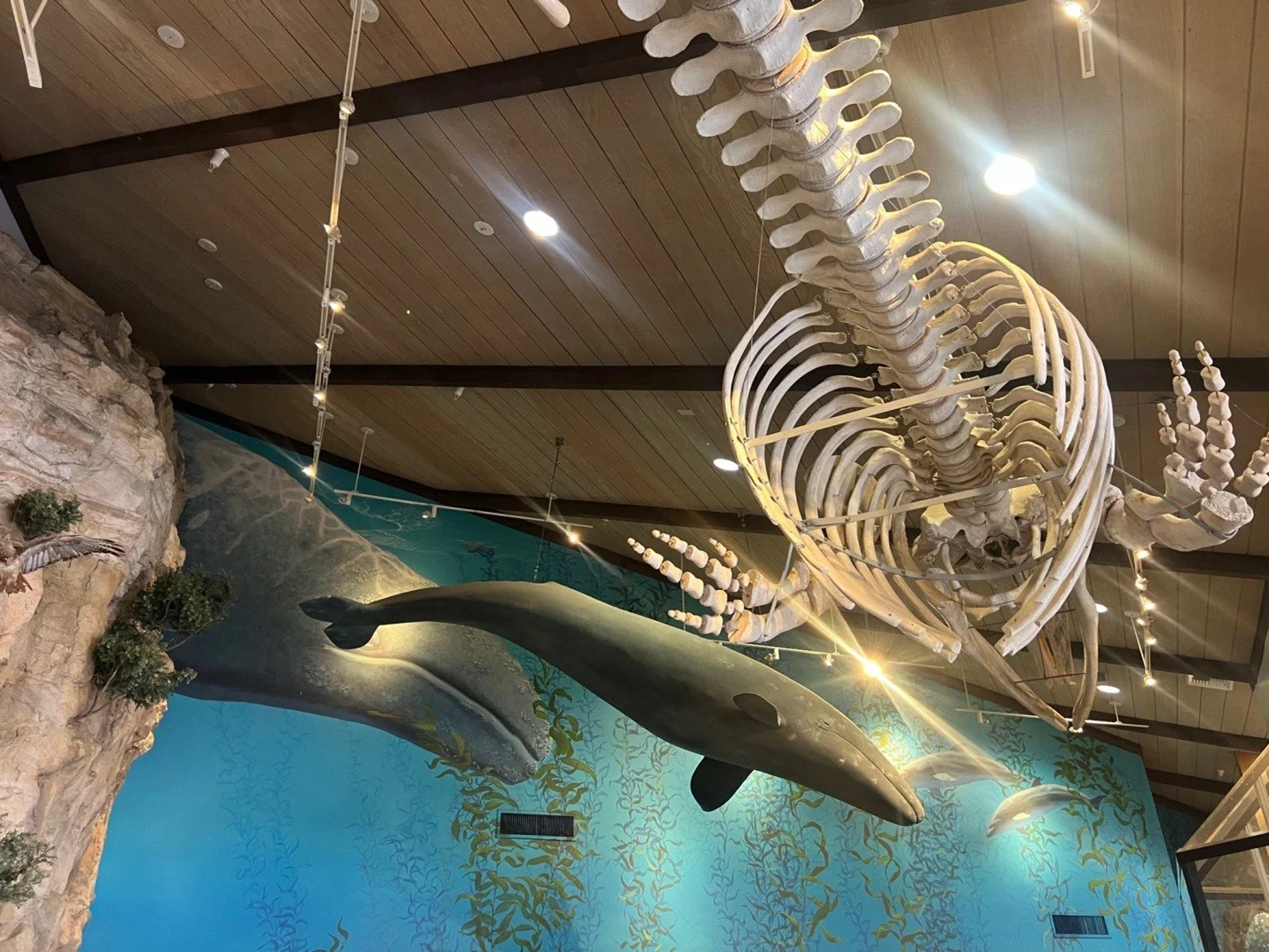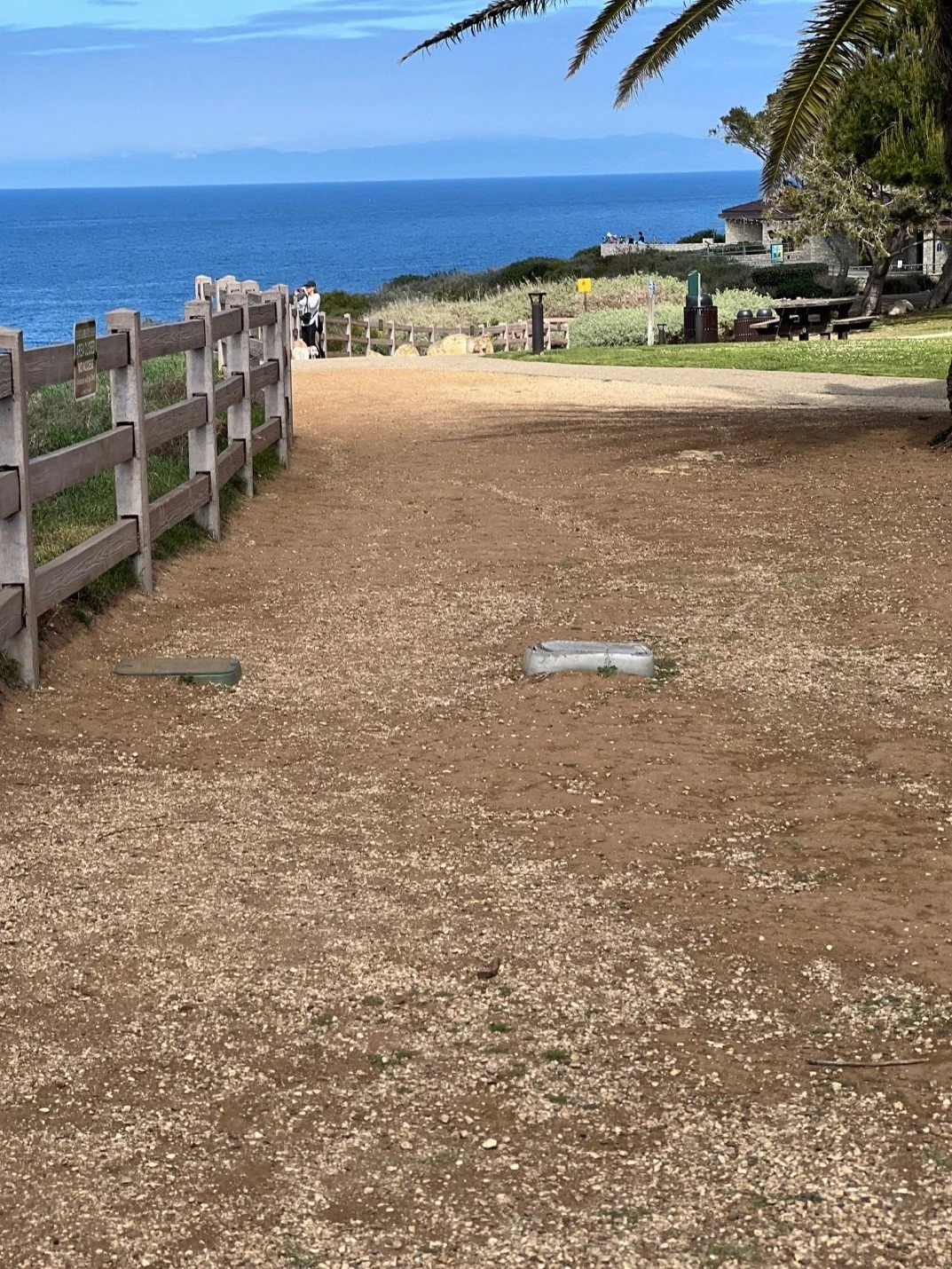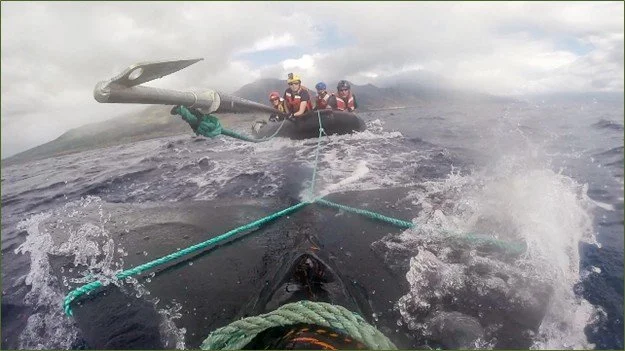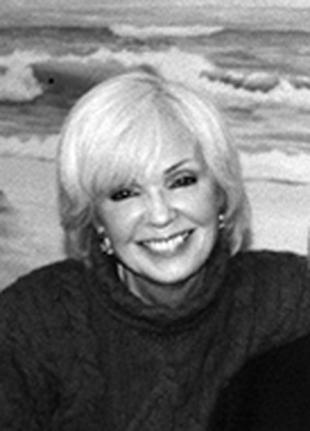The Woman Who Counts Giants By Writer and Contributor NJ Jaeger
Photo Credit: Shane Keena Photography/Life Aquatic Expeditions
Recently seen in the ABC Special, Sea of Change: The Whale Superhighway, marine biologist Alisa Schulman-Janiger, Palos Verdes peninsula’s leading whale expert began her lifelong passion for ocean creatures at age five thanks to an unforgettable lifeguard volunteer at Cabrillo Museum who told her he liked to, “dance like a grunion!.” Twenty years later the same lifeguard, John Algonquin, welcomed the now all-grownup marine biologist Alisa Schulman-Janiger to the Gray Whale Census volunteer team at Point Vicente.
A beach-going family with a father who loved body surfing set the life course for toddler Alisa, who family reports say squealed when she first visited the ocean waddling as fast as her little legs would go into the foamy waves. Alisa says, “I remember in kindergarten my kindergarten teacher Mrs. Stamp brought an octopus preserved in a big Mason jar into the classroom and I refused to go out to recess because I wanted to know everything about the octopus, but she couldn’t tell me much and I remember thinking at that time that I was going to learn every single thing there is about octopus.”
At twelve Schulman-Janiger reflects she was at a crossroads caught between two competing interests, her beloved whales and dolphins or the fascinating chimpanzees chronicled by Jane Goodall. “ I wanted to be just like her to study animals and know them, and know who they were, and know about their families, and their personalities, and their interests, and everything I could, and at that moment thinking: this that this is my life, I am choosing my life path right now.” A practical girl, Schulman-Janiger chose to follow the closer ocean creatures she knew and loved, and her life’s professional trajectory was set.
After receiving her degree, Alisa Schulman-Janiger spent 21 years teaching advanced marine science in the South Bay. Schulman-Janiger has participated in a multitude of ocean environs and mammal research projects as a NOAA staff scientist and as a member of both the California Stranding Response team and Large Whale Entanglement Response Team. Schulman-Janiger says that now, “My favorite interests in life are the American Cetacean Society of Los Angeles Gray Whale Census and Behavior Project and California Killer Whale project. I am the director and coordinator of the Gray Whale Census and Behavior Project for the American Cetacean Society, Los Angeles Chapter.
94 WHALE SPECIES ON EARTH
The Peninsula on a fog-free day is one of the best places to spot the distinctive mottled gray and white markings of the North Pacific Gray Whale. Migrating on a round trip of 12,000 miles down the West Coast from the Arctic to the warmer breeding waters in Mexico, Peninsula residents and visitors have a very good chance of spotting one. Those who bring binoculars will be rewarded with unforgettable images of these ocean giants traveling on one of the longest migration in the world.
The birth of the Gray Whale Migrations Count began at Marineland of the Pacific in Rancho Palos Verdes, California under the direction of Bill Saenaras. The Gray Whale Migration Census is now one of the longest running shore-based marine studies with data dating back to 1984. The Census is listed through the American Cetacean Society of Los Angeles (ACSLA).
North Pacific Gray Whale Migration Arctic to Mexico:
¯ SOUTH November to Mid-February NORTH Mid-February through May
Today the ACSLA Census led by Director Alisa Schulman-Janiger and her volunteer group collect data from the western plaza of the beautiful Point Vicente Interpretive Center 138 feet above sea level. Over 100 of the Peninsula’s finest volunteers of all ages stand at their stations scanning the ocean waters towards Catalina Island 25 miles west to monitor the migration trends and activities of whales. Visitors to the Interpretive Center who walk out to the plaza can view the count board and engage with volunteers to learn about the giants passing by on their way home from the warm waters of Mexico.
Photo Credit: Natalie Massey
Schulman-Janiger shares, “From 2019 to 2023 we lost close to half of the Gray Whale population, due to we believe, a decrease in food availability. This is our lowest count by far for southbound gray whales.”
April is the biggest month for northbound calves and that keeps a lot of volunteers going. Alisa says, “The last several years they’ve been early northbound to hurry back to the feeding area. The La Nina with colder waters means they that whales are not in the lagoons along mainland Mexico but are up into the Gulf of California so they would be later because they have further to travel. “
The Pacific Coast feeding group of whales (a subset) is estimated between 210-250 and this group of Gray Whales typically do not go up to Alaska. They stop and feed between Northern California and British Columbia. They leave for Baja first after feeding in Northern California or Depot Bay Oregon.
THE ORIGINAL SURFERS
Schulman-Janiger states that after 41 years of the Census, she caught this one-time-only event: “ I saw two northbound gray whales and one southbound gray whale and they were passing, and it was almost at the end of the observation area close to the point on this cliff, the northbound stopped right before the cliff at Whale Rock, the southbound stopped right before the cliff, there was a giant wave and all three whales got on that wave… then the southbound continued south, and the northbound continued northbound, so that was a really cool interaction. We watched the southbound whale for nearly two hours; it milled a long time before reaching us. It had healed entanglement scars at the base of its flukes.”
ASJ Photo February 2022
PENINSULA’S TONGVA POPULATION
Geri Jimenez Gould plaque on the Tongva monument at Abalone Cove Park
The Peninsula’s ancestral whale migration route was first seen by the Tongva people. The Tongva were sea faring agriculturalists who inhabited the Los Angeles Basin and Southern Channel Islands for thousands of years and it is believed that in addition to willow branches and reed mats or animal hides they sourced whale bones that washed up to shore to help build their domed homes called kiche. The Tongva esteemed Porpoises and owls and they were never killed. The Tongva lived on the islands of Santa Catalina, San Clemente, and San Nicolas the setting of the beloved children’s story, Island of the Blue Dolphins. An exhibit detailing the history of the Tongva can be viewed at the Point Vicente Interpretive Center beside their popular Gray Whale exhibition featuring life-sized replicas, immersive sound experiences and interactive exhibits of sea faring history.
Peninsula visitors are able to enjoy the museum and then walk the bluff trails to watch the waves for whales and dolphins and soak in the beauty of the ocean and the protected open space surrounding it.
SLEEP SHIFTERS
Whales are color blind and sleep with one half of their brain at a time allowing them to breathe and stay aware. Sleep needs vary among different species with gray whales needing 32% to 41% slumber time and sperm whales only 7%.
Baleen vs Toothed Whale Food Sources
What is a Baleen?
Baleen Plates hold stiff keratin brush-like projections, like fingernails, that trap huge quantities of their favorite prey.
Wikipedia Credit: By Anon NOAA Fisheries Service
Gray whales, blue whales and humpback whales are batch feeders that feed on large numbers zooplankton, copepods, krill, crustaceans and fish strained through baleens attached to gum plates. Toothed whales, orcas, beluga and sperm whales, hunt larger fish and squid. Killer whales target marine mammals, sea birds, turtles and cephalopods. This top predator can attack whales larger than itself. All dolphin families, including killer whales and porpoises, are classified as whales.
Chart Credit: Diana McIntyre for ACS
Wikipedia Diagram Credit
The heavyweight dinosaur Patagotitan mayorum is the largest land animal who ever lived at 77 tons and 122 feet. Fast forward 100 million years and the 100-ton blue whale now reigns as the largest animal on Earth.
Climate Change
Whales will store 33 tons of carbon dioxide in their lifetime, and at death sequester it on the ocean floor for centuries. Whales play a crucial deep ocean role by fertilizing microscopic phytoplankton the basic ecosystem of marine life. Large phytoplankton blooms sequester enormous amounts of carbon dioxide.
Climate change is altering how much food is available in the underwater food system. All sea life is being affected and adaption to these changes are being monitored around the world by subject groups like the one led by Schulman-Janiger.
The National Large Whale Entanglement Network
“Severe entanglements from discarded marine gear can cause injuries that result in death from infection, starvation, amputation (e.g., flippers or flukes), blood loss, strangulation, or drowning.” NOAA
Entanglement responders use a nearly life-size whale tail model to develop and hone skills required for on-water responses to entangled large whales. Credit: Ed Lyman/NOAA
Commercial Whaling Threat
The International Whaling Commission (IWC) member countries including the United States abide by the commission’s international whaling ban three countries do not: Japan, Iceland and Norway. In 2019 Japan left the IWC to conduct whaling in its territorial waters.
American Cetacean Society
https://acs-la.org/commemorating-40-years-gray-whale-census/
The Census is staffed by teams of citizen scientists (trained volunteers) from the American Cetacean Society, the Cabrillo Whale watch Program, and the general public.
Your Own Photos - http://www.happywhales.com.
This site tracks whales around the globe through photo crowd sourcing.
NJ is a storyteller who has written in many voices for clients in health, education, entertainment, food, sport and politics. Her firm managed publicity for documentary films, book authors and the U.S. Championships. NJ received the Lynn Weaver Award from the Entertainment Professional Publicists Society for her lifelong commitment to philanthropy and community volunteerism.














